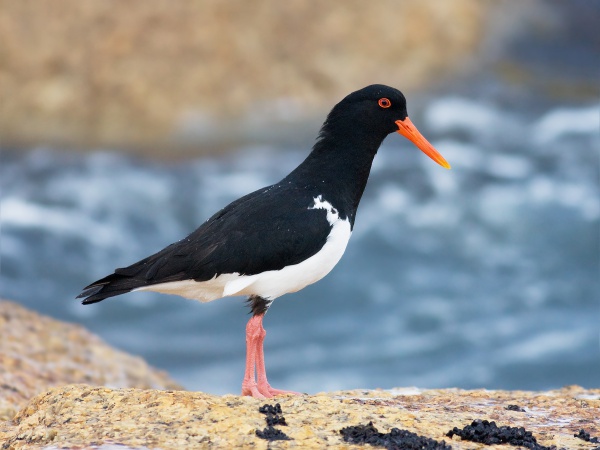Facts About Oystercatcher
Oystercatchers, belonging to the family Haematopodidae and the genus Haematopus, are intriguing birds found along coastlines globally, except in polar regions and certain tropical areas. Notably, some species, such as the Eurasian, South Island, and Magellanic oystercatchers, also breed inland. While black oystercatchers are recognized as distinct species, pied oystercatchers are frequently categorized together as a single species.
The term "oystercatcher" was first introduced in 1731 by Mark Catesby for the North American species H. palliatus. The genus name Haematopus originates from Greek, meaning "blood foot."
Oystercatchers are distinctive in appearance, typically measuring 39-50 cm in length with a wingspan of 72-91 cm. Their plumage is generally black or dark brown, although certain species, like the variable oystercatcher, can be pied. These birds are easily identifiable by their long, orange or red bills, which they utilize to feed on mollusks.
Their diet varies based on their habitat. Coastal oystercatchers predominantly consume bivalves, gastropods, and worms, while their inland counterparts primarily feed on earthworms and insect larvae. They are mostly monogamous and exhibit fierce territoriality during the breeding season. These birds are renowned for their strong fidelity to their mates and nesting sites. They lay spotted eggs, with both parents sharing incubation responsibilities, which span from 24 to 39 days.
Conservation-wise, the Canary Islands oystercatcher is sadly extinct. The Chatham oystercatcher is endangered, while the African and Eurasian oystercatchers are listed as near threatened. Despite occasional conflicts with commercial shellfish farmers, studies indicate that oystercatchers have a less significant impact on shellfish populations compared to shore crabs.
Several fossil species of oystercatchers have been discovered, with the oldest known being Haematopus palliatus.

 Germany
Germany